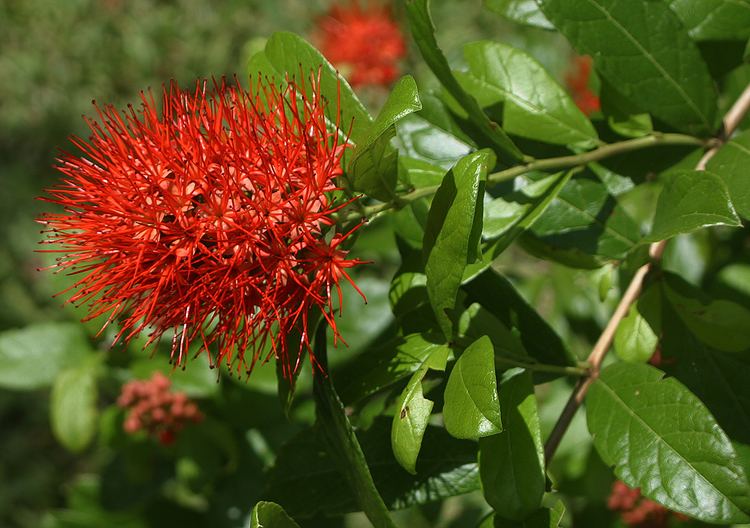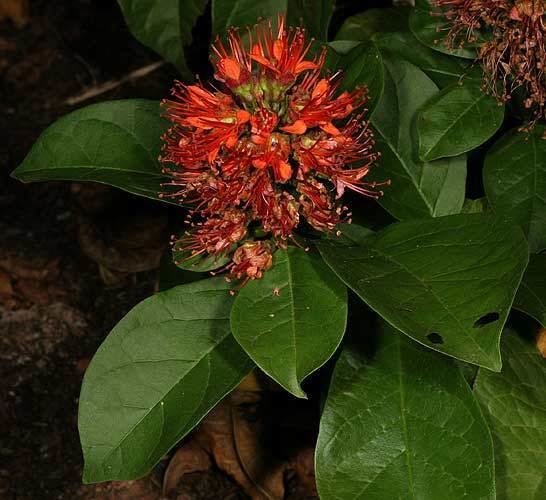Scientific name Combretum Rank Genus | ||
 | ||
Lower classifications Combretum indicum, Combretum micranthum, Combretum imberbe, Combretum erythrophyllum, Combretum quadrangulare | ||
Combretum, the bushwillows or combretums, make up the type genus of the family Combretaceae. The genus comprises about 370 species of trees and shrubs, roughly 300 of which are native to tropical and southern Africa, about 5 to Madagascar, some 25 to tropical Asia and approximately 40 to tropical America. The genus is absent from Australia. Though somewhat reminiscent of willows (Salix) in their habitus, they are not particularly close relatives of these.
Contents

Madhumalti plant or combretum indicum
Ecology

Bushwillow trees often are important plants in their habitat. Savannahs in Africa, in particular those growing on granitic soils, are often dominated by Combretum and its close relative Terminalia. For example, C. apiculatum is a notable tree in the Angolan mopane woodlands ecoregion in the Kunene River basin in southern Africa.

Other species of this genus are a major component of Southwestern Amazonian moist forests. This genus contains several species that are pollinated by mammals other than bats, which is quite rare indeed. But most species are more conventionally pollinated by insects or birds.

Typhlodromus combretum, a mite of the family Phytoseiidae, was discovered on a bushwillow plant and is named after this genus. Other herbivores that eat Combretum foliage include the caterpillars of the Brown Awl (Badamia exclamationis) which is found on C. albidum, C. latifolium and C. ovalifolium; those of the Orange-tailed Awl (Bibasis sena) are recorded from C. extensum and C. latifolium.
Use by humans
Several species are used in African or Indian herbal medicine. The class of chemical compounds known as combretastatins were first isolated from South African Bushwillow (Combretum caffrum), from which they get their name. One synthetic derivative, fosbretabulin disodium (combretastatin A4 phosphate), underwent preliminary study for the treatment of anaplastic thyroid cancer, but it was not effective enough to progress to more advanced trials. C. molle is also recorded to contain antioxidants such as punicalagin, which is also found in pomegranates (Punica granatum), a somewhat related plant.
The botanist George Don studied this genus extensively. The Luvuvhu River in southern Africa was named after the River Bushwillow (C. erythrophyllum), locally known as muvuvhu.
